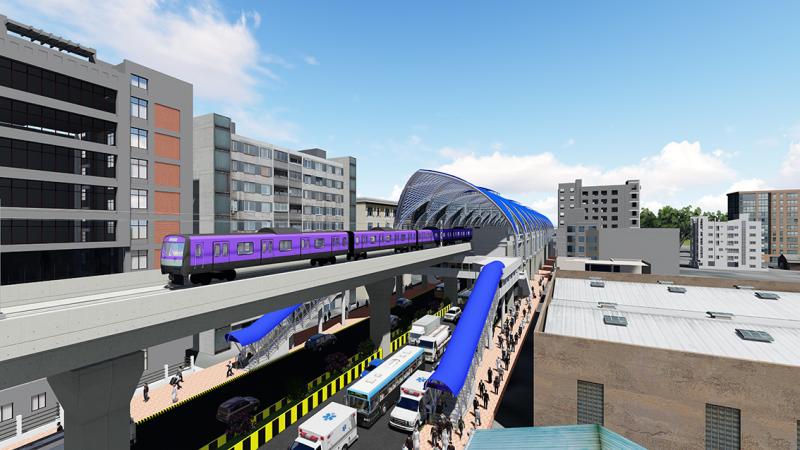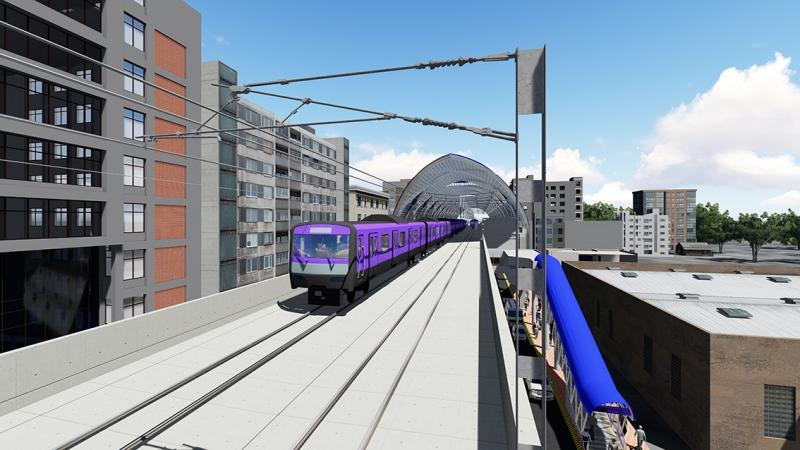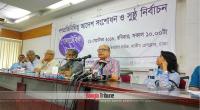 The much-hyped first-ever metro rail service in Dhaka is expected to start initial operations next year.
The much-hyped first-ever metro rail service in Dhaka is expected to start initial operations next year.
The Tk 220 billion project aims to ensure an effective, safe and environment-friendly mass transportation system for the city’s dwellers, but urban planning experts say once complete it will create hassles for the people as the planning lacks proper passenger transfer facilities from the stations.
According to them, the huge number of people coming and leaving the stations as well as the vehicles carrying them will create further traffic congestion on the roads.
“What was not taken into account while planning the metro rail project is the road and traffic management on the ground, “architect and urban planner Mubasshar Hussain told Bangla Tribune. The project details say that 14 trains would operate every three minutes and carry 60,000 passengers every hour in both directions.
The project details say that 14 trains would operate every three minutes and carry 60,000 passengers every hour in both directions.
“Now if we consider that two trains arrive at a station every eight minutes, it means something between 200 and 400 people will be at a station during non-peak hours, which will be 700 to 800 during peak hours.” he said before adding that means 500 to 600 people at any given time will gather on the footpaths entering and leaving the stations.
Hussain said the design keeps provisions for two escalators at each station for entry and exit.
“Spot visits revealed that there is not enough space on the ground below the stations for installing two escalators, which means it has to land on the existing footpaths.” A former president of the Institute of Architects Bangladesh (IAB), Hussain recommends acquiring or renting ground floors of nearby buildings.
A former president of the Institute of Architects Bangladesh (IAB), Hussain recommends acquiring or renting ground floors of nearby buildings.
“If it’s installed on the footpaths, then there will be no room left for the pedestrians, who will have to walk on the roads,” he said.
Pointing out the gathering of the vehicles carrying passengers to and from the stations, he said, “The reality is there will be no space for the people. How will the vehicles fit? Besides that, the stations are being built nearby the major roads in the city, so it will create further traffic congestion.”
According to him, the metro rail stations will require 8,000 to 10,000 square feet open space on the ground to address the issue.
“From what we have found until now, neither the city corporation, any other organization have provided that space for the stations nor the metro rail authorities have acquired. The officials have no idea on the effect of the stations on the ground,” said Hussain.
Metro rail fact sheet
>> Dhaka Metro Rail Project total cost of Tk 220 billion
>> Officially known as the Mass Rapid Transit (MRT) Line-6, metro rail service is expected to open half of its 20.10 kilometres by the end of 2019
>> Once completed, the service would carry 60,000 passengers every hour
>> A 20-km Metro Rail route will be constructed from Uttara to the Bangladesh Bank in Motijheel having 16 stops;
>> The project is expected to save Tk 200 billion a year, equivalent to 1.5 percent of the gross domestic production (GDP) and 17 percent of the total tax revenue;
>> It will significantly reduce travel time from one end to the other to 36 minutes from at least two hours
>> The Japan government through JICA will provide Tk 166 billion of the total project cost of Tk 220 billion ($2.5 billion) as loan at 0.01% interest rate. The government is funding the rest;
>> Nippon Koei Ltd of Japan is leading the consortium of consultants with partners Nippon Koei India Ltd, Delhi Metro Rail Corporation Ltd, Mott MacDonald Ltd India, Mott MacDonald Ltd UK and Development Design Consultants Ltd Bangladesh;
>> The consortium has prepared metro's detailed design, supervised construction work and helped manage Dhaka Mass Rapid Transit Development Project, the official name of the metro scheme, with Dhaka Transport Coordination Authority (DTCA) as its implementing agency
>> The metro rail will have 16 stations at Uttara, Mirpur, Rokeya Sarani, Khamarbari, Farmgate, Sonargaon Hotel, Shahbagh, Doel Chattar and on Topkhana Road.
>> The 12-km track of the first part stretches from north Uttara to Agargaon.
>> 14 trains would operate every three minutes and carry 60,000 passengers every hour in both directions.
>> The estimated time to travel the 20km distance, from north end of Uttara to Motijheel, is 35 minutes.
>> The government has allocated Tk 34.25 billion for the project in 2018 fiscal year, which is about 64 percent of the amount it was supposed to foot.
>> The second phase, which will be from Agargaon to Motijheel, will be complete by December 2020. The service will start with six trains and once the second phase is completed 24 trains will be sent out. The trains will be from Mitsubishi.
“There is no planning to address the need of transport for the huge number of people coming and leaving stations. And it’s obvious that vehicles like rickshaws, three-wheelers, cars, bus will gather at the stations to carry them creating a traffic issue,” he told Bangla Tribune.
Haque, who teaches at the Bangladesh University of Engineering and Technology (BUET), also pointed out to the issue of existing footpaths being occupied for the stations’ landings.
“The problem is infrastructure projects in our country work on deadlines, which leaves room for errors. Passenger transfer facilities from stations are imperative. Elevated walkways can be a solution, which can connect to the nearby buildings,” he said.  The planning for metro rail lacks the issue of addressing the traffic management for people coming and leaving the stations, according to urban planning expert Adil Mohammed Khan.
The planning for metro rail lacks the issue of addressing the traffic management for people coming and leaving the stations, according to urban planning expert Adil Mohammed Khan.
“The metro rail authorities have absolutely no plans for the ground. They have no coordination with the concerned government agencies as well. Their only responsibility is construction,” he told Bangla Tribune.
The project lacks a coordination between the city’s ‘intermodal services’ and the metro rail, Khan said adding it will no doubt be an issue.
“There’s still time — initiatives should be opened for an effective mass transport system,” said the general secretary of Bangladesh Institute of Planners. According to him, metro rail was the sixth priority in the 2005 Strategic Transport Plan.
According to him, metro rail was the sixth priority in the 2005 Strategic Transport Plan.
“We have taken number six to number one. I have doubts the metro rail will solve the transport problem in Dhaka,” Khan told Bangla Tribune.
Despite several attempts Metro Rail Project Director Aftab Uddin Talukder and implementing agency Dhaka Mass Transit Company Ltd Managing Director MAN Siddique were not available for a comment.


